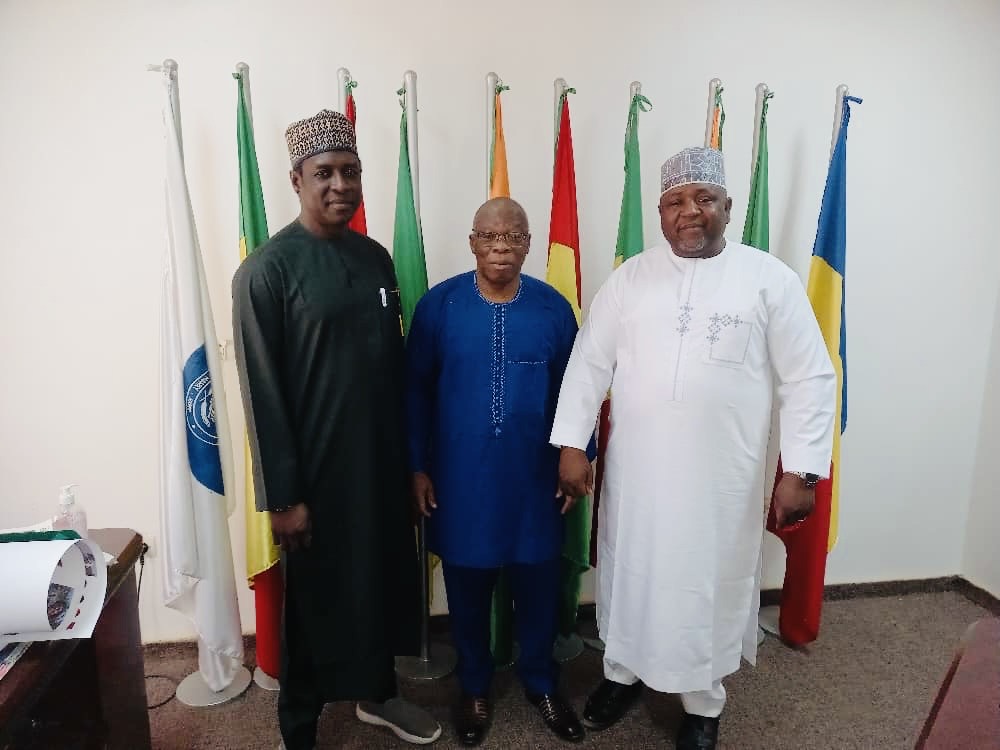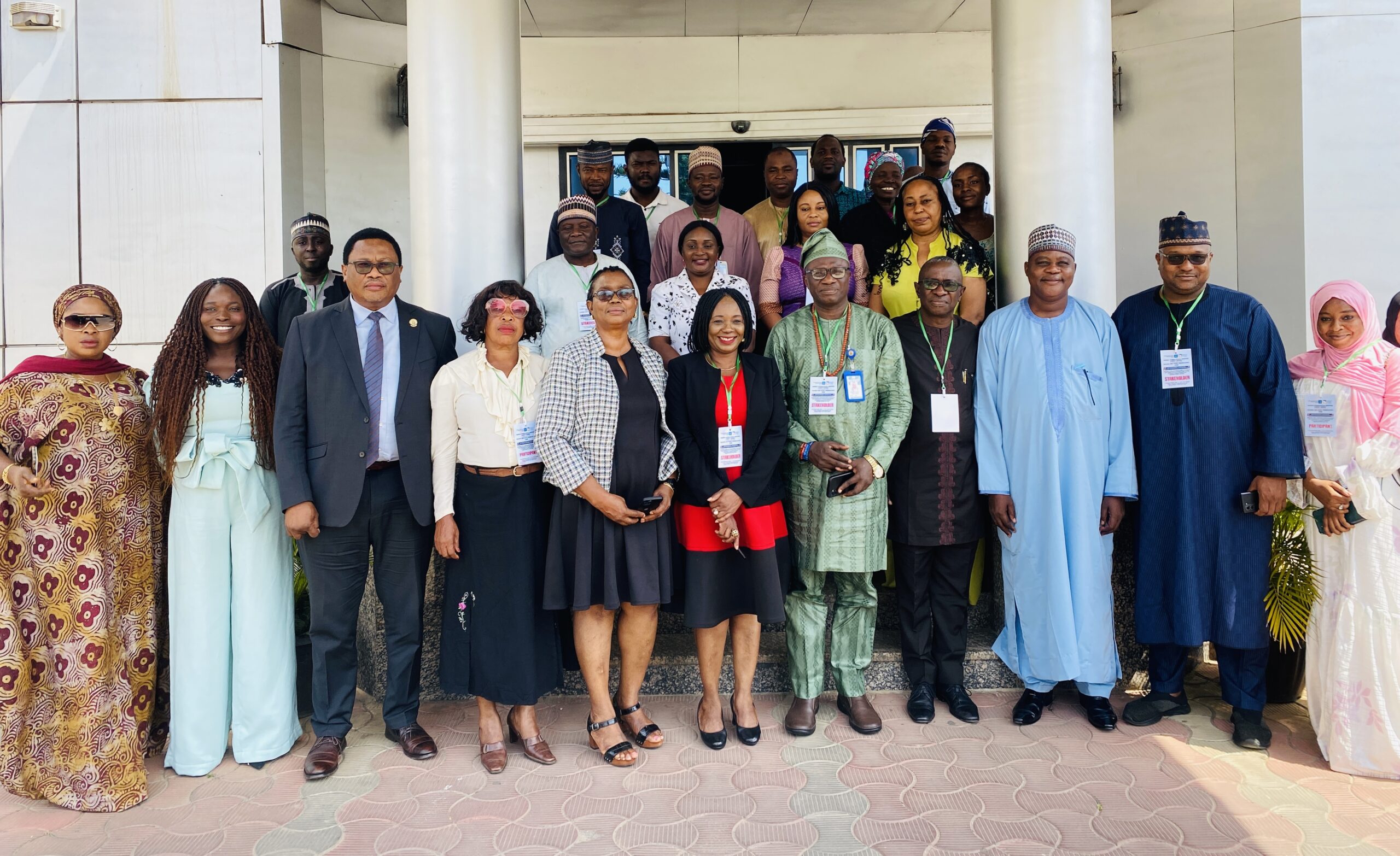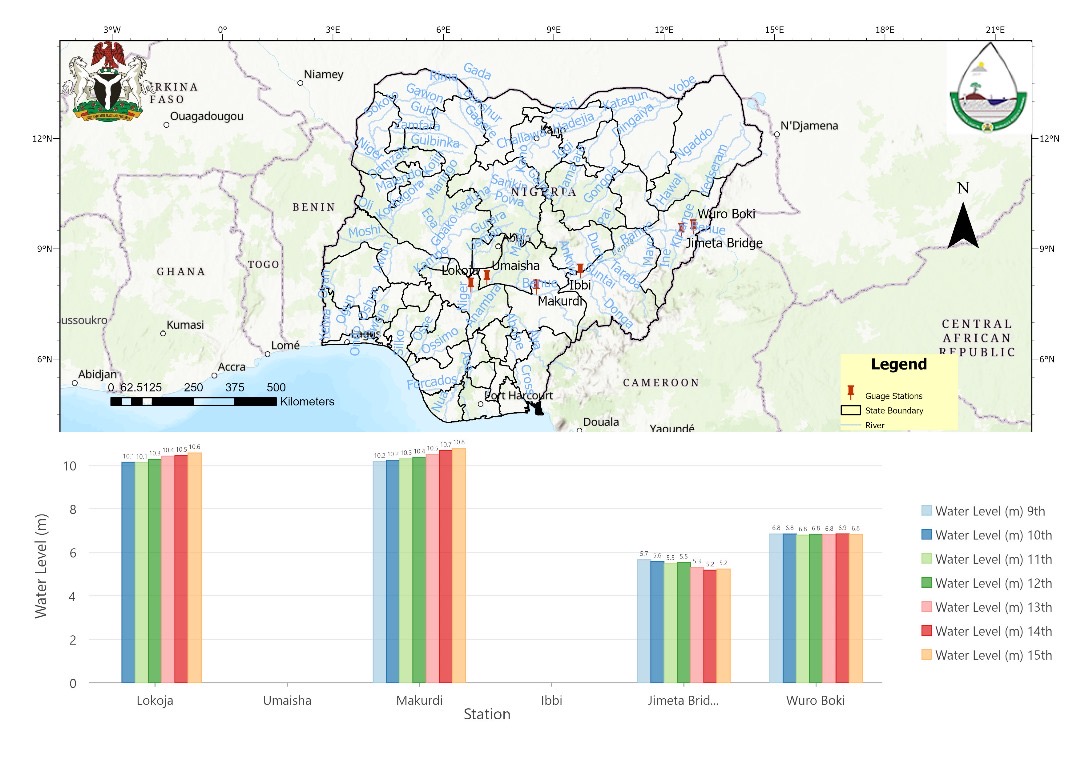NiHSA warns of imminent downstream flooding
By Tosin Kolade
The Nigeria Hydrological Services Agency (NiHSA) on Thursday warned of imminent downstream flooding as Rivers Niger and Benue, along with their tributaries, had risen to peak levels.
The Director-General of NiHSA, Umar Mohammed, issued the alert in Abuja while giving an update on the flow conditions of rivers and the water levels in major dams across the country.
Mohammed said the development had heightened the risk of flooding in vulnerable communities along the Niger–Benue basin and called for immediate precautionary measures.
According to him, Rivers Rima, Kaduna and Gongola, which are major tributaries of the two rivers, have also attained peak discharge, further increasing the risk to surrounding towns and farmlands.
He said several large dams in the country were recording surges in reservoir levels as a result of the peak of the rainy season.
“Kainji and Jebba dams located on River Niger are currently spilling excess water to maintain their designed safety levels.
“This situation is posing threats to nearby communities such as Kainji, Patigi, New Bussa, Borgu, Mokwa, Jebba, Gungu, Gana, Fanga, Bele, Bere, Gaba and Baro,” he said.
The D-G explained that Zungeru Dam on River Kaduna was not spilling, but noted that its reservoir level had risen to 229.15 metres while the downstream water level was 134.17 metres.
He said Goronyo Dam in Sokoto State had filled to its maximum design capacity of 288 metres and was spilling at maximum rate.
“This situation is already causing flooding in downstream and upstream communities, particularly in Goronyo, Wamako, Shinaka Yerimawa, Kurukuru and environs,” he added.
On Kiri Dam in Adamawa, Mohammed said it was also spilling, with the downstream water level at 8.42 metres, leading to flooding in Kiri, Tallum, Banjiram, Purokayo-Lakumna and Shelleng.
He explained that the Lagdo Dam in Cameroon, which had often been linked to floods in Nigeria, was not spilling at present.
“The current water level at Lagdo is 37 metres, which is below its maximum design height of 40 metres. This means there is still a storage capacity of about three metres.
“The flooding being experienced in Adamawa, especially in Yola North, Yola South, Girei and Numan, is mainly due to heavy rainfall and internally generated runoff within the River Benue catchment,” he said.
Mohammed said NiHSA would continue to monitor the situation closely and share timely updates with authorities and the public.
He urged state governments, emergency agencies and residents in flood-prone communities along Rivers Niger and Benue to take proactive measures to safeguard lives and property.
“The agency is working in close coordination with dam operators to mitigate the downstream impacts.
“However, communities must play their part by relocating from floodplains, protecting valuables and adhering to early warning advisories,” he added.
The DG stressed that while technical interventions were ongoing, community awareness and preparedness remained key to reducing the losses from this year’s floods. (NAN)
Edited by Abiemwense Moru




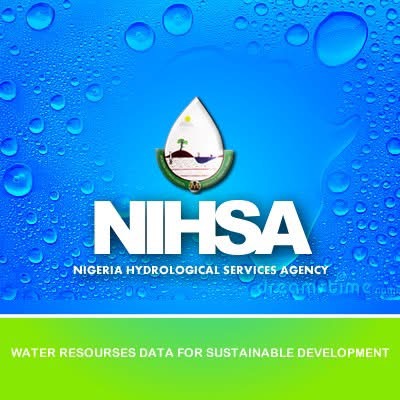

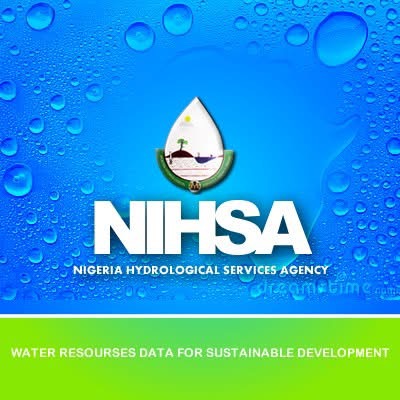

 According to him, coastal states such as Bayelsa, Cross River, Delta, Lagos, Ogun, Rivers, and Ondo may also experience flooding caused by rising sea levels and tidal surges, posing a threat to livelihoods and river-based activities.
According to him, coastal states such as Bayelsa, Cross River, Delta, Lagos, Ogun, Rivers, and Ondo may also experience flooding caused by rising sea levels and tidal surges, posing a threat to livelihoods and river-based activities. Mohammed explained that this year’s forecast adopts a more community-focused approach, extending beyond local government areas to identify specific at-risk communities.
Mohammed explained that this year’s forecast adopts a more community-focused approach, extending beyond local government areas to identify specific at-risk communities.